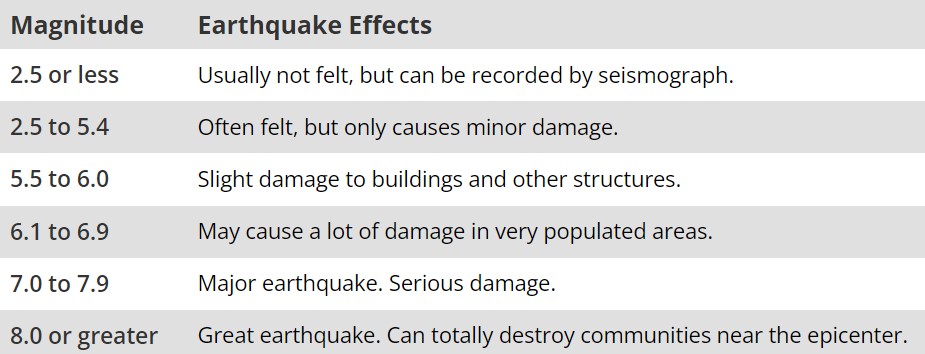Japan experiences approximately 1,500 earthquakes annually, more than any other place in the world. The country is situated along the “Pacific Ring of Fire” lying across three tectonic plates, including the Pacific Plate under the Pacific Ocean and the Philippine Sea Plate.
Regrettably, on New Year’s itself, a series of major earthquakes hit Japan after 4pm local time. The largest reached a magnitude of 7.6 and struck Japan’s island, Honshu, on the west coast.
To grasp the severity of this earthquake, it’s important to note that any earthquake above magnitude 6 can result in substantial harm to populated areas.

More than 97,000 residents in nine prefectures on Honshu were instructed to evacuate their homes and seek shelter in sports halls or school gymnasiums for the time being.
Tsunami Warning Lowered
Japan initially issued a major tsunami warning for Ishikawa and lower-level tsunami warnings for the rest of the western coast of the island of Honshu.
This warning has not been issued since the March 2011 earthquake and tsunami that claimed nearly 20,000 lives.
However, the warning has since been downgraded to a regular tsunami, indicating the possibility of the water reaching up to 3 metres. Residents of coastal areas are advised not to return to their homes as as deadly waves could still pose a threat.
Impact of the Earthquake
Reports have emerged of up to 30 collapsed buildings in the Wajima prefecture and over 100 buildings experiencing fires.

Furthermore, large cracks were formed in the middle of a road in Wajima.
The earthquake’s tremors reached Tokyo, approximately 500 kilometers away from Wajima in the opposite coast.
Almost 33,000 households in the Ishikawa and Niigata prefectures are currently without power, and mobile phone communication services had been disrupted.
On Monday, 1400 passengers were stuck on four halted bullet train services between Kanazawa and Toyama cities. Parts of a highway within the regions were closed due to damage.
One of Ishikawa’s airport runways developed cracks, leading to the suspension of airport operations. ANA, a Japanese airline, had to divert planes destined for Toyama and Ishikawa airports, and Japan Airlines canceled most of its services to Niigata and Ishikawa regions.
Japan’s weather agency also issued a warning about the potential for powerful aftershocks, which are smaller earthquakes, that may continue over the next few days. The United States Geological Survey reported at least 14 smaller aftershocks in the vicinity of the 7.5 magnitude earthquake’s epicenter.
8 Deaths Confirmed
As of now, the earthquake has killed eight people. Ishikawa police told NHK that one of the confirmed fatalities was an elderly man who was rescued from a collapsed house.
The fire department told NHK that they had received more than 50 reports of collapsed houses and were responding to reports of people trapped under damaged buildings. Authorities and hospitals communicated to NHK that dozens of people had been injured in four other prefectures including Niigata and Toyama.
NHK reported that people who had sustained injuries from the injuries had been transported to a hospital in Suzu City in Ishikawa. Unfortunately, some doctors were unable to reach the hospital due to damage roads.
The hospital had to rely on a backup generator due to power outages
In Wajima city, medical staff found themselves treating patients in a parking area in the facility.
No Abnormalities found in Nuclear Plant
Given the tragic nuclear accident following the March 2011 earthquake, nuclear plants in Japan are understandably a source of concern.
However, the Nuclear Regulation Authority (NRA) has confirmed that no irregularities had been identified.
Additionally, no problems with the reactors at Shika nuclear power plant in Ishikawa Prefecture had been found. These reactors had already been offline prior to the occurrence of this earthquake.




